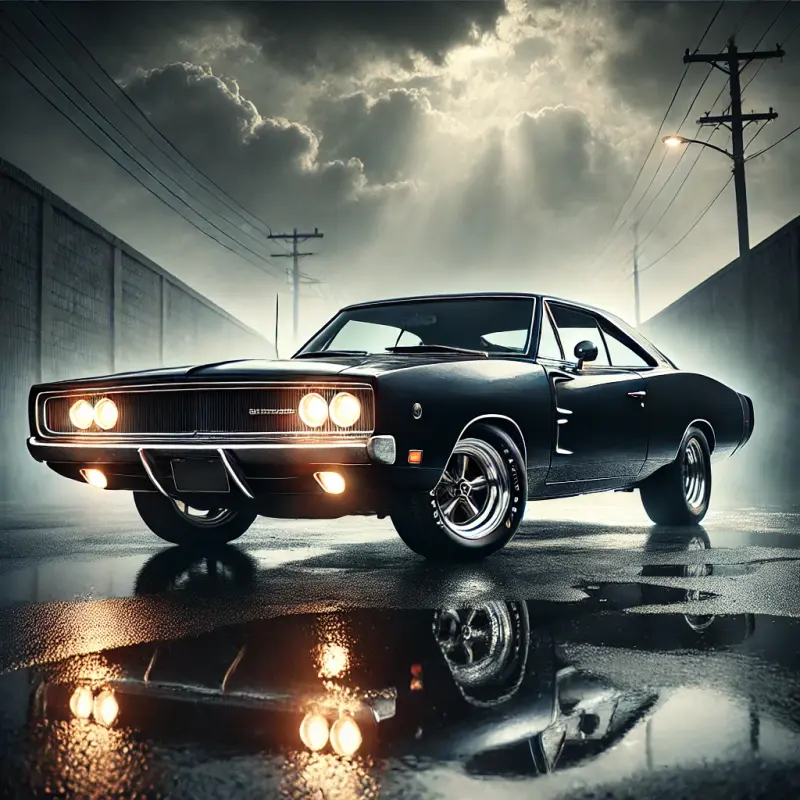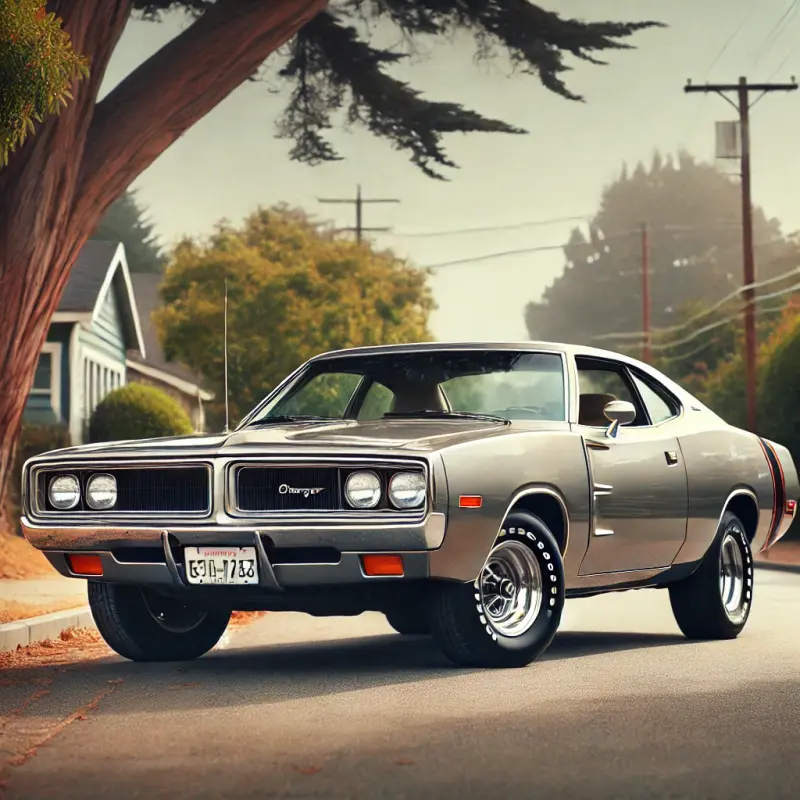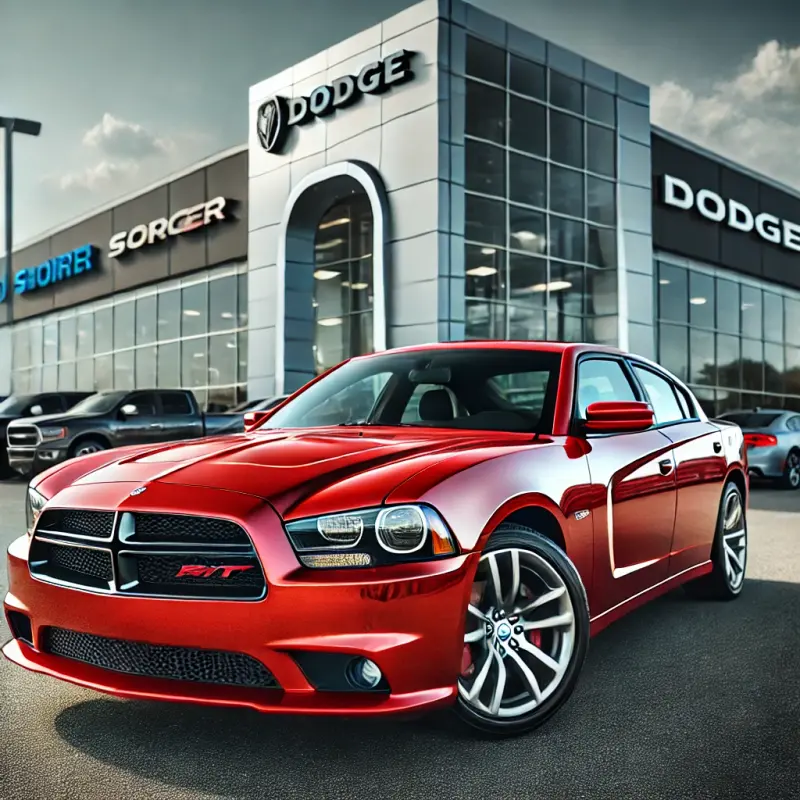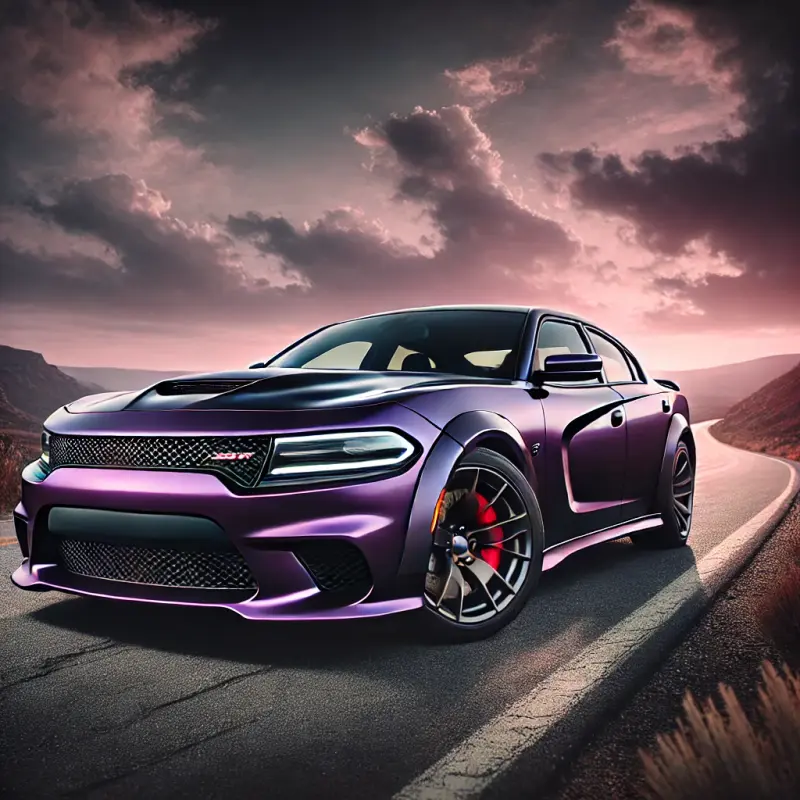The History of the Dodge Charger: A Legacy of Power, Style, and Innovation
The Dodge Charger is one of the most iconic and enduring muscle cars in automotive history. From its early days as a performance-oriented coupe to its present-day status as a modern muscle car, the Charger has captivated automotive enthusiasts and collectors for decades. This blog will take a deep dive into the rich history of the Dodge Charger, tracing its evolution through the years, the impact it has had on American car culture, and the role it continues to play in the performance vehicle market.

Early Beginnings: The Birth of the Dodge Charger (1966-1969)
The story of the Dodge Charger begins in the mid-1960s, a time when muscle cars were becoming increasingly popular in the United States. The American automotive industry was thriving, and manufacturers were eager to create cars that combined style, power, and performance. In 1966, Dodge decided to enter the rapidly growing muscle car segment with a bold new design that would eventually define the brand's identity for decades to come.
The first Dodge Charger made its debut in 1966, and it was a significant departure from the more traditional designs of the era. Unlike its competitors, the Charger was built to stand out with its fastback roofline and sleek, aggressive stance. The car was initially introduced as a high-performance option for buyers looking for a more stylish alternative to the typical full-size sedan. Dodge marketed the Charger as a "performance car" with luxury features, combining elements of both high-end cars and muscle vehicles.
Under the hood, the first-generation Charger came equipped with a range of engines, from the standard 318-cubic-inch V8 to the more powerful 383-cubic-inch and 426-cubic-inch V8 engines. With this combination of style and power, the Charger quickly garnered attention from car enthusiasts and performance-minded drivers. It was the perfect balance of form and function, offering impressive horsepower while still maintaining a level of refinement not typically seen in muscle cars of the time.
The first generation of the Charger (1966-1967) was relatively modest in terms of production numbers, with only about 37,000 units sold over the two-year period. However, it laid the foundation for what would become a beloved American icon.
The 1968-1969 Charger: The Muscle Car Icon Emerges
In 1968, Dodge unveiled a redesigned version of the Charger that would go down in history as one of the most recognizable muscle cars of all time. The 1968 Charger featured a more aggressive and angular design, with a split grille, hidden headlights, and a fastback roofline that contributed to its distinctive look. The car’s appearance was bold, and it exuded power and speed from every angle.
Under the hood, the 1968 Charger offered a wide range of engine options, including the 383-cubic-inch V8, the 440-cubic-inch V8, and the legendary 426 HEMI V8. The HEMI engine, in particular, became the stuff of legend, offering an astonishing 425 horsepower and making the Charger one of the most potent muscle cars on the market.
In addition to its performance, the 1968 Charger also earned a place in pop culture thanks to its starring role in the popular TV show "The Dukes of Hazzard," which debuted in 1979. The show's iconic General Lee—a 1969 Dodge Charger painted with a bright orange color and adorned with a Confederate flag on the roof—cemented the Charger’s status as an American icon and further fueled its popularity among car enthusiasts.
The 1969 model year continued the Charger’s dominance in the muscle car market, with improvements in both performance and design. The car received new striping and decal options, as well as the introduction of the "R/T" (Road/Track) trim, which was designed for enthusiasts who wanted a more performance-oriented vehicle. The Charger R/T came with the 440 Magnum engine or the even more powerful 426 HEMI, solidifying its place as one of the fastest and most potent cars on the road.
Despite its success, the muscle car era of the late 1960s began to slow down due to rising insurance costs and tightening government regulations on emissions. The first generation of the Dodge Charger ended in 1970, but the legacy of these cars would continue to influence the muscle car world for years to come.
The Charger in the 1970s and 1980s: A Shift in Focus
In the early 1970s, the American automotive landscape began to change. The muscle car era was coming to an end, and new regulations regarding emissions, safety standards, and fuel efficiency began to shape the industry. The oil crisis of 1973 further dampened the appeal of gas-guzzling performance cars, and as a result, the Dodge Charger underwent a significant transformation.
The 1970-1974 Charger: A Refined Muscle Car
The 1970 model year marked the debut of the second-generation Dodge Charger, which featured a more refined design than its predecessor. While still maintaining the car's signature fastback roofline, the 1970 Charger had a slightly larger body, and it was offered with a broader range of trim options. The Charger continued to offer potent engine choices, including the 383, 440, and 426 HEMI V8 engines. However, by 1971, the introduction of stricter emissions regulations and the declining demand for high-performance cars meant that the HEMI engine was discontinued, and power output began to decrease.
Despite these changes, the 1970-1974 Chargers remained popular among muscle car enthusiasts, and the car still had a strong performance pedigree. However, by the mid-1970s, the Charger was no longer the dominant force in the muscle car segment. Dodge's focus shifted toward creating a more practical and family-oriented vehicle that would appeal to a wider range of buyers. As a result, the Charger became more of a personal luxury coupe than the raw, performance-focused muscle car it once was.
The 1975-1978 Charger: The End of an Era
By the mid-1970s, muscle cars were no longer the primary focus of the American automotive industry. The 1975 Charger, with its soft lines and more refined design, was a far cry from the aggressive muscle car that had first captured the hearts of performance enthusiasts. The car’s engine options were toned down significantly, with the largest available engine being a 360-cubic-inch V8.
In 1976, the Charger was discontinued for a brief period, and it wasn’t until 1978 that it returned as a more compact and economy-minded vehicle. This version of the Charger had little in common with the original muscle car and was ultimately discontinued after the 1981 model year.

The Charger Returns: The 1980s and 1990s
The 1980s and 1990s were not kind to muscle cars in general, and the Dodge Charger was no exception. The nameplate was dormant for several years, with only brief attempts at reviving it in the form of front-wheel-drive models that failed to capture the essence of the original car.
However, Dodge’s muscle car lineage never fully disappeared, and there was always a sense that the Charger could return. In the late 1990s, Dodge introduced the concept of a new Charger, a car that would once again embrace the performance and power that made the original models so iconic.
The 1999 Dodge Charger Concept
In 1999, Dodge revealed a concept car at the North American International Auto Show in Detroit. The Dodge Charger concept car was a bold reinterpretation of the muscle car, combining retro design cues with modern technology. Though it was a concept vehicle and not immediately available for production, the Charger concept generated significant excitement among car enthusiasts, setting the stage for its eventual return.

The Modern Dodge Charger (2006-Present): A New Era of Performance
After a long hiatus, the Dodge Charger returned to the market in 2006 as part of Chrysler's new era of muscle cars. The modern Charger was a four-door sedan that blended the power and performance of the classic muscle car with the practicality and comfort of a family vehicle. The new Charger retained its aggressive styling, with a bold front grille, muscular fenders, and a fastback roofline that paid homage to its predecessors.
2006-2010: The Revival of the Muscle Sedan
When the 2006 Dodge Charger was introduced, it was available with a range of powerful engine options, including the 3.5-liter V6, 5.7-liter HEMI V8, and the high-performance 6.1-liter HEMI V8 in the SRT8 model. The Charger was praised for its handling, acceleration, and modern design, and it quickly became a favorite among enthusiasts who wanted a muscle car with four-door practicality.
The 2006-2010 models were well received for combining the spirit of the classic muscle car with modern features, and the Charger began to carve out a new niche in the performance sedan market.

2011-Present: The Charger as a Performance Icon
Since 2011, the Dodge Charger has continued to evolve, with the introduction of even more powerful engine options, including the 6.4-liter HEMI V8 and the supercharged 6.2-liter HEMI V8 found in the Dodge Charger SRT Hellcat. The Charger became a performance powerhouse, capable of producing over 700 horsepower in its Hellcat form. With advanced technology, superior handling, and cutting-edge safety features, the modern Charger is a car that can hold its own on both the street and the track.
Today, the Dodge Charger remains one of the most powerful and popular muscle cars on the market. Its distinctive styling, impressive performance capabilities, and rich history ensure that the Charger will continue to be an automotive legend for years to come.